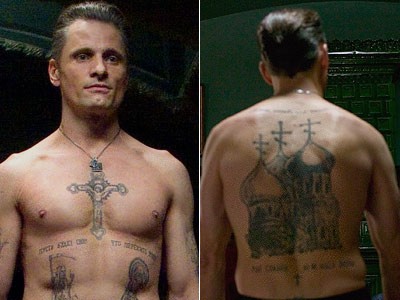Having a tattoo can reduce your chance of getting a job, but it depends on where the tattoo is, what it depicts and if the job involves dealing with customers, new research says.
Dr Andrew R. Timming told the British Sociological Association conference on work, employment and society in Warwick today [Wednesday 4 September] that employers were prone to view tattoos negatively. Dr Timming, of the School of Management at the University of St Andrews, said he had spoken to 15 managers involved in hiring staff about their reaction to interview candidates with visible tattoos. The managers worked for organisations including a hotel, bank, city council, prison, university and bookseller.
“Most respondents agreed that visible tattoos are a stigma,” Dr Timming told the conference. One woman manager told him that “they make a person look dirty”. Another male manager told him “subconsciously that would stop me from employing them.” Another male manager said “tattoos are the first thing they [fellow recruiters] talk about when the person has gone out of the door.”
The managers were concerned about what their organisations’ customers might think, said Dr Timming. “Hiring managers realise that, ultimately, it does not matter what they think of tattoos – what really matters, instead, is how customers might perceive employees with visible tattoos.
“Respondents expressed concern that visibly tattooed workers may be perceived by customers to be ‘abhorrent’, ‘repugnant’, ‘unsavoury’ and ‘untidy’. It was surmised that customers might project a negative service experience based on stereotypes that tattooed people are thugs and druggies.”
One woman manager told him: “We all judge people on first impressions and what we sum up is quite quick. When they [customers] walk in the door and see that there’s a receptionist with guns or knives tattooed, or ‘hate’ tattooed, I think that is something that would be uncomfortable.”
Dr Timming said: “The one qualification to this argument is there are certain industries in which tattoos may be a desirable characteristic in a job interview. For example, an HR manager at a prison noted that tattoos on guards can be ‘something to talk about’ and ‘an in’ that you need to make a connection with the prisoners.”
The negative attitude to tattoos did not extend to ones that could be easily concealed by clothing. Three of the managers themselves had concealed tattoos – one “was so proud of his body art that he somewhat humorously took off his shirt, exposing his naked torso” during his conversation with Dr Timming.
Dr Timming also found that in some of the organisations it was only certain types of tattoos that diminished the chances of getting a job at interview. One male manager told him: “If it’s gang culture-related you may have a different view about the tattoo than if it’s just because it’s a nice drawing of an animal that they’ve done on their arm.”
Dr Timming told the conference: “Tattoo acceptance was at its highest with innocuous symbols like flowers or butterflies. Military insignia was also seen as a ‘badge of honour’.
“Examples of distasteful tattoos given by the managers included ‘a spider’s web tattooed on the neck’; ‘somebody being hung, somebody being shot’; ‘things to do with death’; ‘face tears, which suggest that you’ve maimed or killed’; ‘something of a sexual content’; anything with ‘drug connotations’; and ‘images with racist innuendo’ such as a swastika.”
He also found that “there was a broad consensus among the respondents that although visible tattoos still hold a degree of taboo, in the not-so-distant future they will inevitably gain greater acceptance in the wider society.
“Several respondents pointed out that intolerance to tattoos is currently strongest amongst the older generations. That, coupled with the increasing prevalence of tattoos in younger people, points to a future in which body art will become largely normalised and accepted.
“Tattooed applicants can take comfort in the fact that the stigma associated with body art appears to be on the wane and that, as a corollary, there will likely be an increase in the number of potentially sympathetic tattooed hiring managers.
“In the event that one chooses to get a visible tattoo, one would do well to select a genre that is unlikely to be perceived as distasteful by hiring managers, co-workers and customers alike.”
Dr Timming’s interviewees worked for 14 organisations with between one and 24,000 staff, and were all based in mid or southern Scotland. The managers were aged in their 30s, 40s, 50s and 60s.



